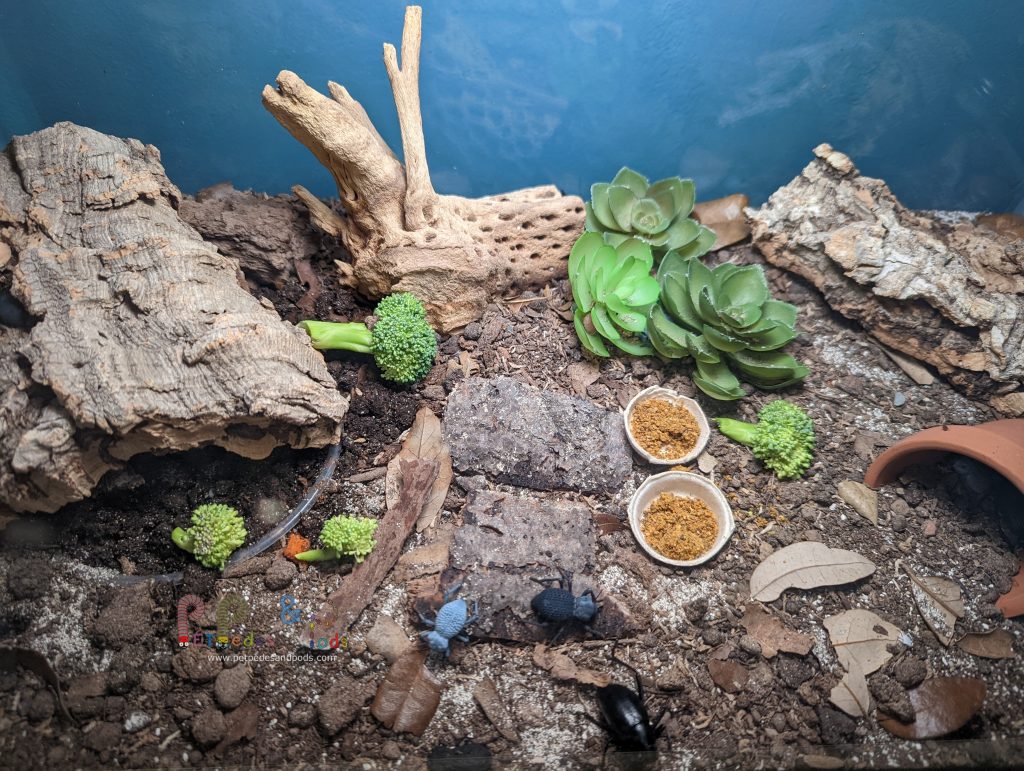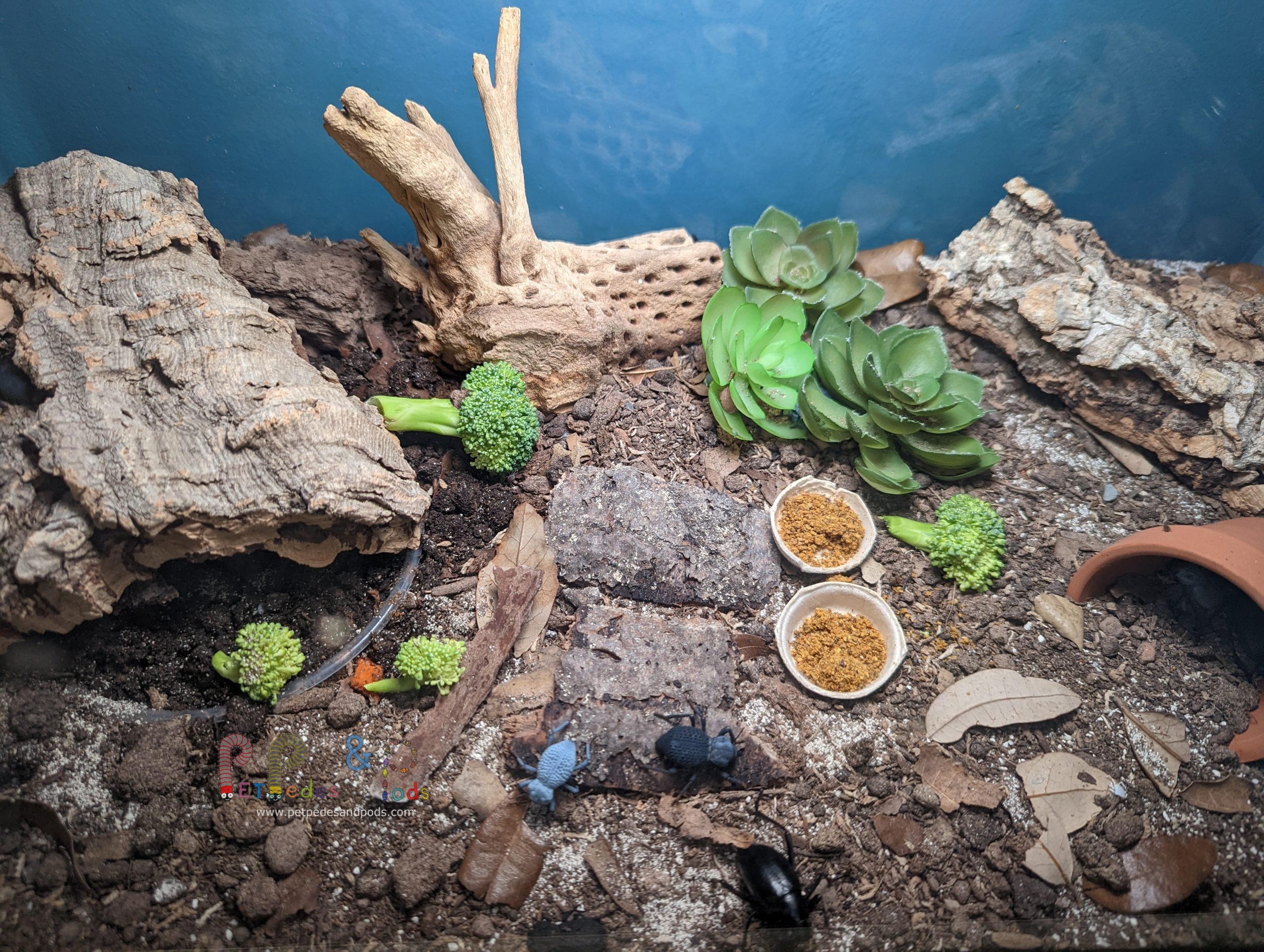This care guide is for any of the community desert beetles we carry, including Blue Death Feigning Beetles and Eleodes darkling beetles.
These beetles are from the desert, so it’s important to keep them dry. For my own setups, most of the enclosure is kept dry at all times. The substrate is a sand/soil mixture. On one end, I have an 8 ounce deli cup full of isopod substrate sunk into the sand/dirt mixture. I water this cup occasionally to maintain a moist area, and there is some cork bark and leaf litter over top of the moist area to help keep the moisture from evaporating immediately. This is a great place for them to deposit eggs if you’re planning on breeding them. If you’d rather not deal with larvae, then this is not necessary and you can keep them simply on a sand or sand and soil mix.
Water: All the water that your beetle needs comes from their food in the form of fresh washed veggies and occasional fruits offered about once a week. They should not be given a water bowl.
Food: These beetles are omnivores and should get a varied diet. Fresh veggies should be offered about once a week (carrots and broccoli are always a hit), and fish food is a great staple for protein. They will also eat dead feeder insects, freeze dried shrimp, and even munch on leaf litter. Experiment with your beetles to see what they enjoy the most!
Temperature: Room temperature is sufficient for desert beetles and they can handle lower and higher temperature swings as long as they aren’t for prolonged periods of time. Some people like to provide supplemental heat, but it isn’t usually necessary and should be done with caution and always with a thermostat.
Lighting: No special lighting is required but they do benefit from having a day/night cycle. An LED light can provide this and make it easier to view them during the day.
Blue Death Feigning Beetles: The “blue” comes from a waxy secretion that the beetles make to help them lock in moisture. If your beetle gets wet or the air is too moist, they will turn black instead of blue. This is a good indicator that your enclosure is too moist! Once they dry out again, the blue color will return after a few days.
For more reading, check out our article: Community Desert Beetle Habitat With Isopods





